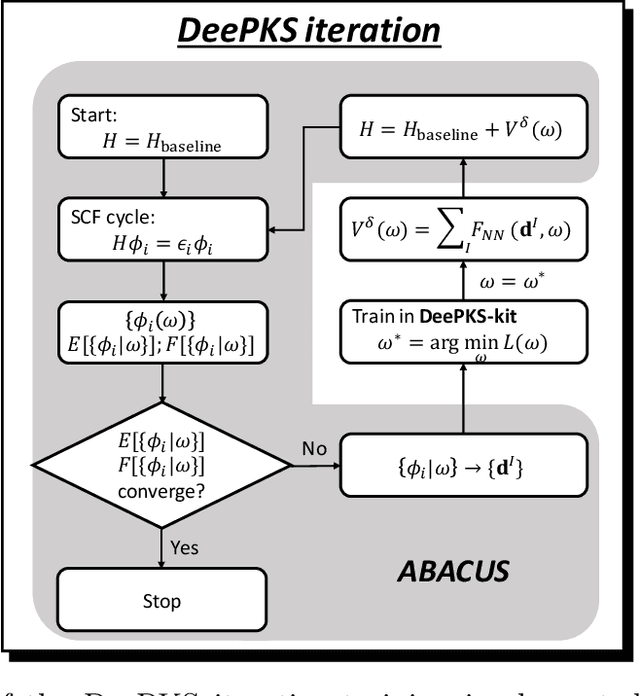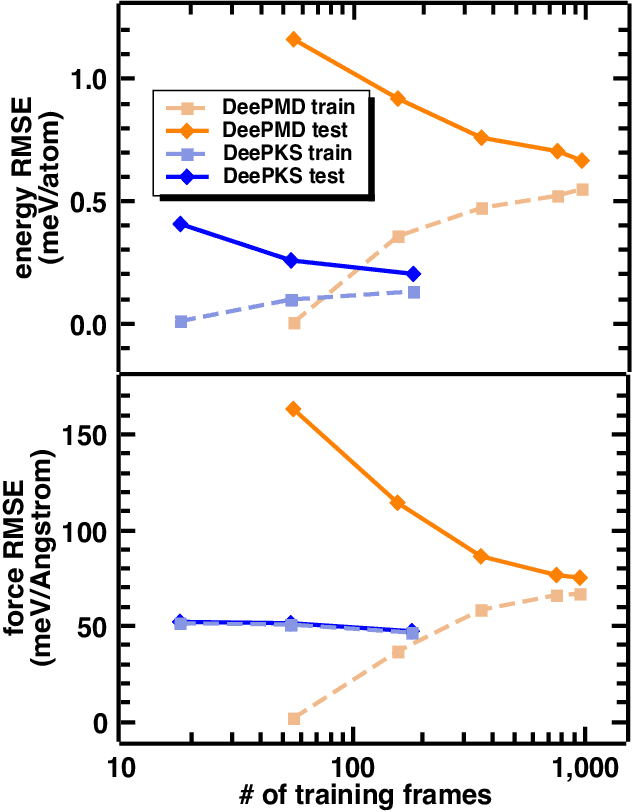Wenfei Li
DeePKS+ABACUS as a Bridge between Expensive Quantum Mechanical Models and Machine Learning Potentials
Jun 21, 2022



Abstract:Recently, the development of machine learning (ML) potentials has made it possible to perform large-scale and long-time molecular simulations with the accuracy of quantum mechanical (QM) models. However, for high-level QM methods, such as density functional theory (DFT) at the meta-GGA level and/or with exact exchange, quantum Monte Carlo, etc., generating a sufficient amount of data for training a ML potential has remained computationally challenging due to their high cost. In this work, we demonstrate that this issue can be largely alleviated with Deep Kohn-Sham (DeePKS), a ML-based DFT model. DeePKS employs a computationally efficient neural network-based functional model to construct a correction term added upon a cheap DFT model. Upon training, DeePKS offers closely-matched energies and forces compared with high-level QM method, but the number of training data required is orders of magnitude less than that required for training a reliable ML potential. As such, DeePKS can serve as a bridge between expensive QM models and ML potentials: one can generate a decent amount of high-accuracy QM data to train a DeePKS model, and then use the DeePKS model to label a much larger amount of configurations to train a ML potential. This scheme for periodic systems is implemented in a DFT package ABACUS, which is open-source and ready for use in various applications.
Computational prediction of RNA tertiary structures using machine learning methods
Sep 03, 2020


Abstract:RNAs play crucial and versatile roles in biological processes. Computational prediction approaches can help to understand RNA structures and their stabilizing factors, thus providing information on their functions, and facilitating the design of new RNAs. Machine learning (ML) techniques have made tremendous progress in many fields in the past few years. Although their usage in protein-related fields has a long history, the use of ML methods in predicting RNA tertiary structures is new and rare. Here, we review the recent advances of using ML methods on RNA structure predictions and discuss the advantages and limitation, the difficulties and potentials of these approaches when applied in the field.
* 20 pages, 2 figures. Chinese Physics B, Aug. 2020
 Add to Chrome
Add to Chrome Add to Firefox
Add to Firefox Add to Edge
Add to Edge